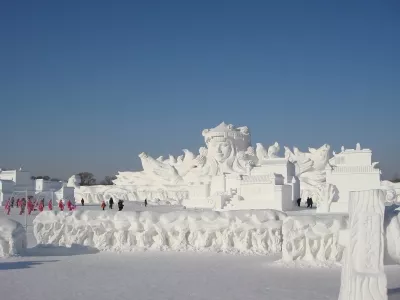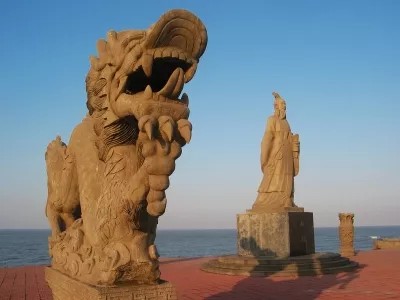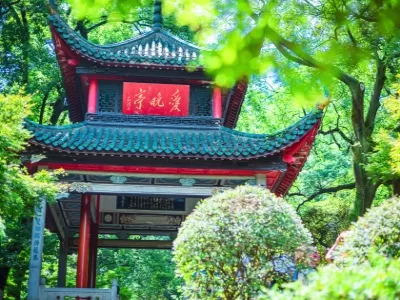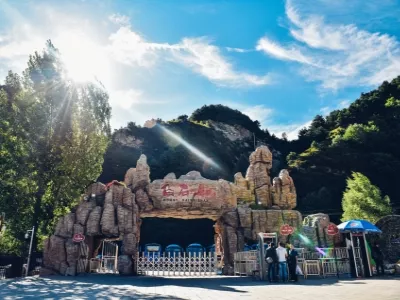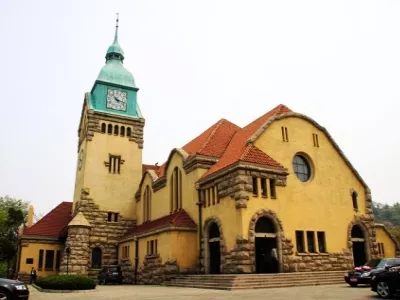Hong Kong Island, a unique blend of Eastern and Western cultures, is often regarded as a half-Chinese and half-foreign city. This special aesthetic is attributed to its diverse historical background, as it has been influenced by Chinese, English, and American cultures. Visitors to Hong Kong Island are often impressed by its eclectic blend of old and new, tradition and modernity, resulting in a city that is both chaotic and orderly, simultaneously vibrant and serene.
The Island is home to a plethora of shopping destinations, from the high-end boutiques of Tsim Sha Tsui to the trendy neighborhoods of尖沙咀and旺角. For those seeking more down-to-earth experiences, there are also the bustling street markets and hawker centers that offer an array of local delicacies. Whether it's the bustling commercial streets or the quaint alleyways, one can easily lose themselves in the Island's labyrinthine streets.
What many may not know is that Hong Kong Island is also home to some of the best dining experiences in the city. From the Michelin-starred restaurants in five-star hotels to the delectable street food found in markets and on the streets, there is truly something for every palate.
And then there's the nightlife. Hong Kong Island's nocturnal activities are as diverse as they come. One can enjoy the cool breeze on Victoria Peak or Marvel at the lights of Victoria Harbour and Avenue of Stars. And if one is feeling more adventurous, they can always visit Disneyland Castle and experience a slice of fairy-tale magic.
However, if one wants to escape the hustle and bustle of the city, there are always places to go. Take the tram, for example. This historic mode of transportation offers a wonderful way to traverse the length of Hong Kong Island while soaking in its old-world charm. The ride takes you through some of the Island's most scenic spots, including historic buildings, charming cafes, and quaint bookshops. It's an ideal way to escape the modern world and embrace the serenity of the past.
Lastly, there's also nothing like a day at the beach to truly unwind and relax. Hong Kong Island is home to some of the most beautiful beaches in the city, with soft sand and clear waters that offer the perfect escape from the heat of summer. Whether it's Lamma Island or Cheung Chau that one chooses to visit, there's no shortage of seaside fun and relaxation to be had.
In conclusion, Hong Kong Island is a city that truly has something for everyone. With its rich history, unique culture, and diverse experiences, it's no wonder that it is often described as one of the most exciting cities in Asia. So whether you're a foodie, shopaholic, history buff, or just looking for a relaxing getaway, Hong Kong Island has something waiting for you.
Consumption level
Prices in Hong Kong are high. At a minimum budget, expect to spend around $600 USD total for two people for a 3 night/4 day trip including food, activities and accommodation. It will cost more if staying alone since accommodation is the biggest expense. Shopping splurges can drive costs up exponentially. Top hotels on Hong Kong Island average $300-360 USD per night. 4-star hotels range from $170-260 USD, while budget travelers often choose 3-star hotels averaging $110-160 USD per night. Cheap hostels are around $40 USD and youth hostel dorm beds start around $13 USD. Dining costs are similar to top mainland Chinese cities. Local fast food breakfasts and lunch sets at cafes cost around $3-4 USD including drink. Lunches are $4-5 USD with drink. Dinners with drink average $5-6 USD. Pineapple buns and egg tarts cost $0.40-0.65 USD each. Milk tea and coffee average $1.50-2 USD. Dishes like wonton noodles and fish ball noodles range widely from $1.30 USD at small shops to $2-4 USD at nicer establishments. Prices rise accordingly for higher end restaurants.
Currency
The official currency in Hong Kong is the Hong Kong Dollar (HKD), denoted as HK$. In April 2015, the exchange rate was approximately 1 HKD = 0.80 CNY. Chinese yuan is accepted at many major retail outlets in Hong Kong. At some grocery stores and shopping malls, prices can be paid directly in CNY or by debit/credit card which will automatically convert to HKD at a rate slightly lower than the daily average. Some small shops directly take CNY as HKD at par value which is not favorable to mainland visitors. It's best to exchange CNY to HKD at a Chinese bank before arriving in Hong Kong, choosing a day with a favorable exchange rate. There are money changers everywhere in Hong Kong marked with "Exchange" signs but rates are poor. For shopping, having a credit card with UnionPay is best - look for the UnionPay logo at checkout counters which can process payments directly in CNY based on the daily exchange rate. Avoid using CNY at small eateries and use HKD for those instead. Getting HKD in advance rather than exchanging in Hong Kong provides the best value.
Tip
Most hotels and restaurants in Hong Kong add a 10% service charge to bills. Customers can leave an additional tip of around 5% at their discretion. If no service charge is applied, you may proactively tip 10% of the total bill. Tips are customary for taxi drivers, hotel porters, and washroom attendants - use your best judgement on appropriate amounts. There is no strict tipping etiquette in Hong Kong. Leaving spare change or rounding up the bill is appreciated. A 10-15% tip is common at high-end establishments or for exceptional service. However, tipping is not expected or required. Hong Kong service staff are reasonably compensated without relying on gratuity. Ultimately, tip what you are comfortable with based on your service experience.
Hong Kong New Year Festival
Ring in the Lunar New Year with Hong Kong's captivating blend of Chinese tradition and international flair. Festive floats parade along the harbor for the Spring Lantern Festival while dazzling fireworks light up Victoria Harbour. Make a wish at the Wishing Tree ritual or experience the thrill of Chinese horseracing. Hong Kong's unique Lunar New Year customs like these complement iconic traditions - flower markets, temple fairs, and sumptuous feasts. The city bursts with joyful decorations and festivities to welcome the Year of the Horse. Spend the public holidays from January 31st to February 3rd, 2014 soaking up the spirited atmosphere with family. While government offices and banks close, transport and major tourist attractions operate as usual. Most shops and restaurants in main tourism districts also open except local markets which take the first two days off.
Tiantian Birthday
On April 22nd, Hong Kong celebrates the birthday of Tin Hau, the revered goddess of the sea, with colorful parades and rituals. Though the fishing community is declining in this modern metropolis, over 70 temples still honor Tin Hau. The festivities at Yuen Long's Tai Fung Tong temple feature elaborate flower cannons and a grand procession. Sai Kung's century-old Tin Hau temple has fishing boats circling to honor her. Legend says the kindly maiden Tin Hau, surnamed Lam, could predict the weather and saved many from storms. Coastal communities traditionally worshipped her for safe voyages and bountiful catches. Joining the birthday festivities offers an insightful look into Hong Kong’s maritime heritage and living folk traditions centered around this beloved patroness of the ocean.
Tan Gongxian
On May 6th, Hong Kong honors Tam Kung, the child god of the sea, on his birthday with colorful parades and ceremonies. The festivities at Shau Kei Wan's Tam Kung Temple, the city's oldest, are especially lively with dragon and lion dances and a fiery floating child god effigy. Like the goddess Tin Hau, Tam Kung protects fishermen and sailors. Legend says he was a 12-year-old boy in Song dynasty China with powers to control weather and cure illnesses who later became deified. When you visit his temple, you'll notice Tam Kung's statue depicts him as a young boy. Folklore says this immortal child god learned techniques to halt aging, so even at 80 he maintained a youthful appearance. Joining the birthday celebrations offers a fascinating look into this beloved folk deity who watches over Hong Kong's waters.
Hong Kong Summer Festival
Hong Kong celebrates summer with a sizzling lineup of events and deals. The energy peaks from June to August with the world-famous Dragon Boat Festival races, star-studded music festivals, massive book and anime conventions, and huge summer sales. Get ready for a nonstop extravaganza, the coolest carnival in Asia! Cheer on traditional long boats with dragon heads and drummers competing in white-knuckle races. Jam out to international headliners and local artists at spectacular outdoor concerts. Stock up on books and manga at the mega fairs with over a million titles. Comb the malls for fashion and gadget bargains at the citywide summer sale. With endless events ranging from sports to shopping, exhibitions to entertainment, there's something for everyone. Experience Hong Kong's most exciting season blended with Chinese traditions and international flair.
Mid- Autumn Festival
This cosmopolitan metropolis puts a modern twist on ancient traditions during the 9-day Hong Kong Mid-Autumn Festival each September. In 2013, a monumental moon sculpture illuminated Victoria Park's creative lantern carnival, lighting up Hong Kong's nights. A 67-meter fire dragon danced through the streets, displaying the vitality of this century-old custom. From traditional mooncakes and lanterns to innovative events, Hong Kong celebrates Mid-Autumn with flair. Admire the full harvest moon while strolling scenic harborside promenades. Browse colorful night bazaars brimming with festive foods, flowers, and gifts. Gaze in wonder at massive displays and carnivals glowingly lit with countless LED lights. Sample exotic mooncake flavors like ice-cream or bird's nest. As old customs fuse seamlessly with new concepts, Asia's world city puts a unique spin on Mid-Autumn through dazzling light displays, street bazaars, and family reunions under the harvest moon.
Hong Kong Dragon Boat Carnival
Hong Kong's summer sizzles with the Hong Kong Dragon Boat Carnival, Asia's premier dragon boat event. For days in June, Victoria Harbour becomes a racetrack for global teams battling in high-octane races as tens of thousands cheer along the shore. Feel the heart-pounding drums as sleek boats with dragon heads sprint to the finish line. After the races, chill out at the beer festival with icy cold brews and rock out to live music at the vibrant carnival celebrating this iconic sport. No wonder the carnival atmosphere here is more electric than anywhere else. Along with cultural performances, martial arts, kids' activities, and delicious local snacks, there's nonstop fun for everyone. With the dazzling skyline as a backdrop, world-class competition, and festive crowds, the Hong Kong Dragon Boat Carnival spotlights the very best of this dynamic international city and the ancient Chinese tradition it gave to the world.
Halloween Carnival Month
Ghosts and ghouls come out to play during Hong Kong's Halloween Carnival Month each October. Challenge your courage at popular attractions hosting spooky activities and costume parties. Malls, restaurants and bars also get into the spirit with themed decorations and special frightful foods and drinks. In 2014, join the Asia's world city in celebrating Halloween and immerse yourself in a month of spine-tingling thrills and chills. Brave the haunted houses filled with terrifying actors at Ocean Park and Disneyland. Show off your costume and dance the night away at Lan Kwai Fong's outrageous street bash. Try creepy cannibal hotpot for dinner or blood-red vampire cocktails at area bars. With costumes, contests, haunted attractions, parties and more, Halloween Carnival Month is a scare-tastic way to experience the most hauntingly fun side of dynamic Hong Kong.
Wine and Food Month
Foodies feast during November's Hong Kong Wine & Dine Month! The epicurean journey begins with the Hong Kong Wine & Dine Festival, where exquisite cuisine and wines from around the world take center stage in Central against the stunning harbor backdrop. With live music, it engages all the senses. Venture out to dine extensively at Hong Kong's culinary districts and carnivals offering tasty local bites. Score dining deals at hotel restaurants. Sharpen your palate at wine tastings, cooking demos and gourmet tours while chatting with experts. Above all, Hong Kong Wine & Dine Month is a voyage to awaken your taste buds and nourish your soul!
Hong Kong Cross Year Countdown
Ring in the new year with a dazzling countdown party along Victoria Harbour! On December 31, join tens of thousands of revelers from around the world for Hong Kong's iconic pyrotechnic show. As fireworks light up the majestic night sky, count down the final seconds of 2014 and cheer for the bright year ahead. Get details on the synchronized fireworks and music show and find prime viewing spots to soak in this stellar New Year's spectacle. At 11pm, illuminated ships start the show, leading up to the midnight fireworks extravaganza exploding over the breathtaking skyline. Share unforgettable moments with family and friends at this world-class celebration infused with Chinese flair. As the clock strikes midnight, watch the lights sparkle on Asia's world city and make a wish for an amazing 2015!
Colorful Winter Festival
Hong Kong sparkles with color this winter during its festive seasonal celebrations! From November to January, Victoria Harbour glows with dazzling light displays. Vibrant large-scale installations in Central and spectacular fireworks at New Year's Eve parties paint the sky in dazzling hues. Attractions and malls deck their halls with Christmas trees dripping in ornaments, jolly Santas, ribbons, and red-and-green everything. This kaleidoscope of festive decor infuses the city with cozy holiday cheer. Combine it with feasts, sales, and deals, and Hong Kong becomes even livelier this time of year! Gather with loved ones in Asia's world city this season to make magical memories amid the twinkling lights. Check out the stunning harbor illuminations, get into the holiday spirit at WinterFest, and welcome 2023 with a bang at New Year's Eve celebrations. With Hong Kong's colorful spin on festivities, it's the most wonderful time of the year!
Taiping Peak Overlooking the Night of Victoria Harbour
If you only have time to visit one place and take one photo in Hong Kong, Victoria Peak would likely top 50% of lists. It offers perhaps the world’s greatest skyline view of one of the finest natural harbors. Gazing down on the dazzling panorama of Victoria Harbour as night falls, you’ll feel Hong Kong’s energy and tranquility, sensing the city’s warmth. With ample time, take the Mid-Levels Escalator from Central’s Exit C, follow Conduit Road and turn left on Shelley Street. Ride 10 minutes to the Peak Tram terminal on Garden Road, reminiscent of the escalator scenes with Tony Leung and Faye Wong in Chungking Express. Then hike about one hour to the summit. There, with the twinkling harbor stretching below, stand in awe of the city’s grandeur. Let Hong Kong’s undeniable magic sink in as you soak up the panoramic nightscape. Victoria Peak offers an unforgettable vantage point to appreciate this dynamic island metropolis.
Take the Dingding tram to explore the seclusion and beauty
"Ding ding!" Drop a couple $HKD coins to board the tram and start our adventure back in time. Begin in Western, soaked in nostalgia as an early Chinese community. The century-old Western Market witnessed eras come and go. Around the corner, famous traditional markets overflow with delicacies from abalone to herbal apothecaries, breathing Old Hong Kong's charm. Passing Central, Wan Chai, Causeway Bay, Happy Valley, and ending in Taikoo, relax as your knowledgable driver navigates. Don't worry about getting lost or schedules. Sit back as the swaying tram steers you to Hong Kong's most local scenes and culture. Trundling down narrow streets flanked by drying shirts on bamboo poles, you'll feel transported. Glimpse neighborhood life through open windows and pocket parks whizzing by. Disembark and immerse yourself in heritage arts, temples, and cuisine. Hong Kong's iconic "ding ding" trams offer a riding peek into the past while taking you where you want to go today.
Encounter Xiangyan on the Tianxing Ferry
In 1963, an American architect in his 40s pursued his dream of becoming a painter in Hong Kong. On his first day arriving by Star Ferry, he met the exquisite eastern beauty "Suzy Wong" and began a torrid love affair, as depicted in the Hollywood film. If you too hope your Hong Kong trip involves such steamy encounters, don't miss the Star Ferry. Even without your own Suzy Wong, however many times you've visited, gliding across Victoria Harbour makes the scenery unfold like movie magic. You'll still marvel at the sensational views. Cars and pedestrians hustle below while you drift leisurely on deck, camera ready. Snap the shimmering skyline sliding by with skyscrapers towering overhead. Capture the bustling Kowloon side approaching. Breathe in the sea air, energized just as when your ship first came in. Whether transport, sightseeing, or hoping for a romantic rendezvous, the Star Ferries that have shuttled generations are an essential Hong Kong experience.
A Chongqing Building with Stories
Wong Kar-wai's film Chungking Express taught us Hong Kongers call pineapple cans "pineapple cans," not "ananas cans." It showed Hong Kongers' abiding love for sunglasses, like Maggie Cheung's character and Wong himself. Most of all, it revealed a place called Chungking Mansions where countless Wong fans make pilgrimages. If Nathan Road is Hong Kong's most elegant facade, this dilapidated building complex towering over Tsim Sha Tsui is one of her ugliest blemishes. Gloomy from disrepair yet intriguingly mysterious, Chungking Mansions overflows with tales from dawn to dusk, midnight to dawn. Dark and sinister, bright and romantic, gaining and losing, arriving and leaving - stories unfold daily in this unique landmark. Explore its maze of guesthouses, curry eateries, and shops crammed with global knickknacks. Chat with wide-eyed backpackers and world-weary traders about their adventures. Sit people-watching as this microcosm of cultures bustles by. Chungking Mansions always surprises with rich human drama behind its worn walls. Wander through and glimpse some of Hong Kong's endlessly fascinating stories.
Best Travel Time
October November: Take a stroll in Victoria Harbour or take a hike on outlying islands (Lamma Island, Cheung Chau). It's always pleasant on sunny days. December March: Hong Kong's discount season starts from the first weekend of December, around a 70% discount. The closer we approach Christmas, the more discounts we offer. The shopping area is mainly concentrated in Tsim Sha Tsui, Mong Kok, Central, Causeway Bay and other places. The higher the discount, the less good goods there will be.Dressing Guidelines
Hong Kong's temperatures rarely dip below 10°C or exceed 37°C, averaging a comfortable 23-27°C year-round.
Pack light jackets or sweaters for spring (mid March to mid May). Summers (late May to mid September) call for short sleeves and cotton dresses—many indoor places have air conditioning, so bring a sweater too. Autumn (late September to early December) is sunny and crisp—shirts, sweaters and light outerwear are perfect.
Don't forget rain gear, as typhoons frequent May through November. Winters (mid December to late February) are cool—wear suits and light sweaters, adding coats on coldest days. Bring extra layers if visiting beaches.
Locals dress fashionably yet practically. Checking forecasts and packing versatile layers will ensure you stay stylish and comfortable while exploring Hong Kong's glitzy cityscape and hiking trails.
History
Hong Kong's history traces back to the Qin Dynasty when it was part of Nanhai Commandery. It later passed under various administrations as one of the world's three natural deep-water harbors. From 1842 to 1898 during the two Opium Wars and First Sino-Japanese War, the British forcibly seized Hong Kong Island, Kowloon, and the New Territories from the Qing government. Over 100 years of British colonial rule left an indelible imprint on Hong Kong. It was not until July 1, 1997 that Hong Kong was finally returned to China after more than a century of separation. As a former British colony, Hong Kong Island retains influences from its colonial past through its architecture, culture, and traditions, while at the same time looking ahead as part of a resurgent China in the 21st century.
Religion and Culture
Virtually every major world religion is practiced in Hong Kong. Chinese Hong Kongers predominantly follow Buddhism and Taoism. There are over 360 temples, 40 public shrines and 24 Tin Hau temples on the island.
Catholicism arrived in 1841 and today has around 258,000 followers. The Catholic Church runs schools, hospitals and community centers in Hong Kong. Protestantism came in 1841 and now has over 285,000 believers encompassing 50 denominations. Protestants also founded many Hong Kong institutions.
Other religions include Islam with about 50,000 followers, over half of whom are Chinese, Hinduism with 12,000 adherents, and small numbers of Sikhs and Jews.
This religious diversity enriches Hong Kong's culture. Visitors can experience multi-faith practices first-hand by exploring the island's colorful temples, churches and cultural centers.
Inbound Bus
Taking Buses to Hong Kong Island
Besides basic transport options to Hong Kong, direct buses from mainland China also offer easy access. Those with L visas should ensure they have the proper visa documents for crossing the border (see Entering and Exiting for details).
Major bus companies like Shenzhen-Hong Kong, Guangdong-Hong Kong and Guangzhou-Hong Kong operate frequent bus services. Of these, China-Hong Kong buses are the most popular for entering Hong Kong.
Direct buses are available from Guangzhou, Foshan, Wuzhou, Yunfu, Jiangmen, Zhongshan and other cities, stopping at designated points around Hong Kong. Hong Kong also has bus stations connecting to various mainland destinations.
Buses provide affordable and convenient transport between the mainland and Hong Kong. Be sure to have your visa paperwork in order, and research the bus stop nearest your destination before departure. Direct buses make cross-border travel to Hong Kong a breeze.
Source
When visiting Hong Kong Island, be aware that electrical outlets follow the British three-prong system, even though the standard voltage is 220V. Bring plug adapters to use devices requiring flat two-prong plugs commonly used in mainland China. Hotels often provide electrical converters, but having your own ensures easy device charging.
When purchasing electronics in Hong Kong stores, check that the plug style matches your needs - UK three-prong or Chinese flat plug. With the proper plug adapter, you can easily keep devices powered up and ready to use as you explore vibrant Hong Kong Island. If unsure about an appliance's plug compatibility, ask sales staff before purchasing.
Other tips
The Octopus Card is a must for convenient transportation and shopping in Hong Kong. Available at MTR stations like Lo Wu and Central Ferry Piers, it offers discounted fares on the MTR, buses, ferries, and other public transit.
Cards come in Adult, Student (for local students only), and Senior (65+) versions. Seniors and students get 50% off rides. The Octopus Card also provides discounts at convenience stores like 7-Eleven and Circle K, plus retailers like ParknShop and Wellcome.
Regarding refunds, a small fee is charged for returns within 3 months of purchase. For frequent Hong Kong visitors, it's recommended to retain the card for future trips. The versatile Octopus Card is the easiest way to get around and maximize your Hong Kong experience!
Tourism consulting
For tourist assistance in Hong Kong, visit one of the Hong Kong Tourism Board's Visitor Information and Service Centres:
1. Kowloon Centre
Address: Star Ferry Concourse, Tsim Sha Tsui
Hours: Daily 8am-8pm
2. Hong Kong Island Centre
Address: Near Exit F, MTR Admiralty Station, Admiralty
Hours: 8am-8pm
3. Airport Centre
Address: Arrivals Halls E2, A and B, Level 1, Passenger Terminal Building, Hong Kong International Airport
Hours: 7am-11pm
4. Lo Wu Centre
Address: 2/F, Arrivals Hall, Lo Wu Terminal Building
Hours: 8am-6pm
Multilingual staff at these convenient locations can provide maps, brochures, transit cards, accommodation assistance, and all the information needed to explore Hong Kong. They will help maximize your time to fully experience Hong Kong Island and beyond.
Safety considerations
Here are some key safety and etiquette tips for travelers to Hong Kong Island:
1. Carrying valid photo ID is required by law at all times. Avoid carrying large amounts of cash. Rely on traveler's checks and credit cards instead, using your hotel safe when possible.
2. Hong Kong's public drinking water is safe, meeting WHO standards. Bottled water is also readily available in hotels, supermarkets, and free public water fountains in some parks.
3. Smoking is strictly prohibited in all workplaces, public places, restaurants, streets, and most public recreational areas in Hong Kong. Fines up to HK$5,000 apply for smoking in non-smoking areas, including on public transport. Spitting, littering, and eating or drinking on the MTR also incur fines.
4. Avoid using the term "comrade" (同志) to address people, as it refers to homosexuality in Hong Kong. Use "brother" (靓仔) for men and "sister" (靓女) for women. Waiters can be addressed as "boss" (大佬).
In summary, carry valid ID, avoid public smoking/littering/eating, drink bottled or public fountain water, and use locally acceptable terms when addressing people in Hong Kong Island. Observing these tips will keep your visit safe, respectful and enjoyable.


